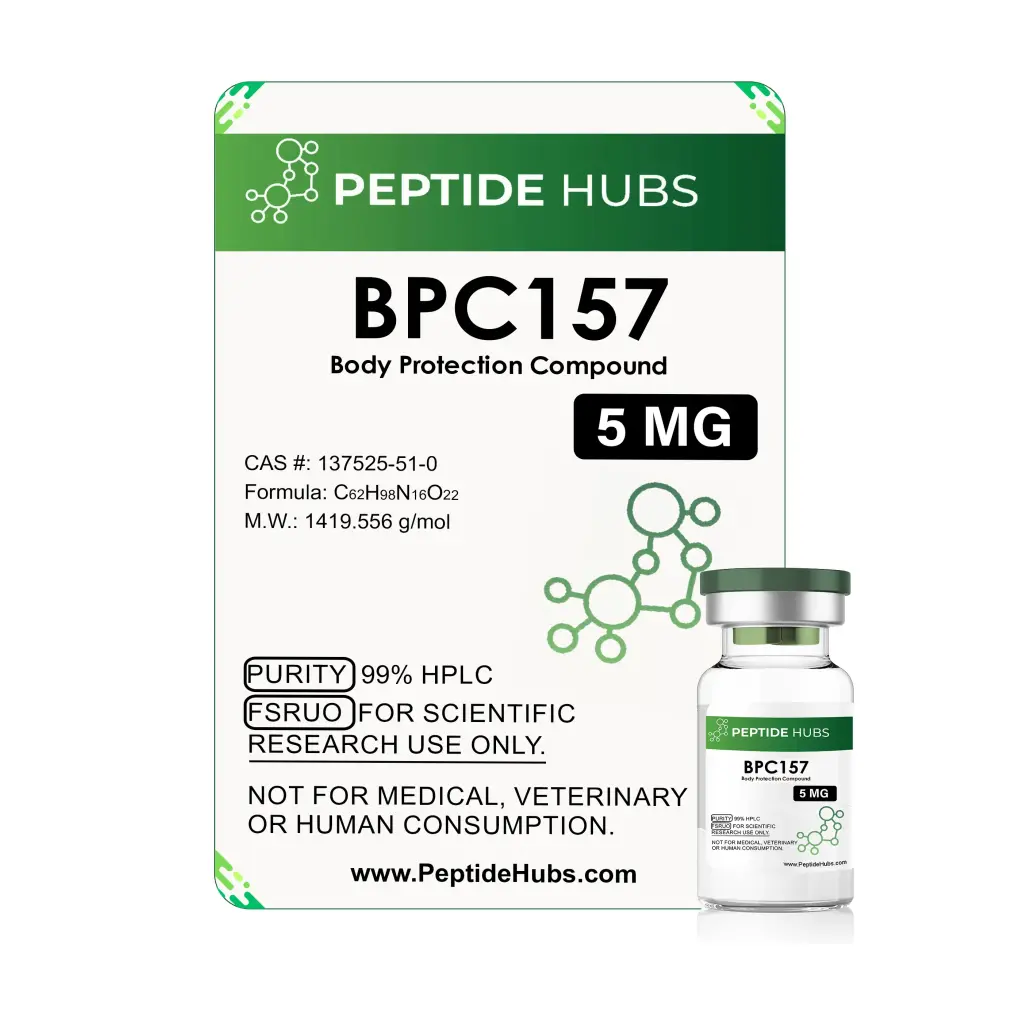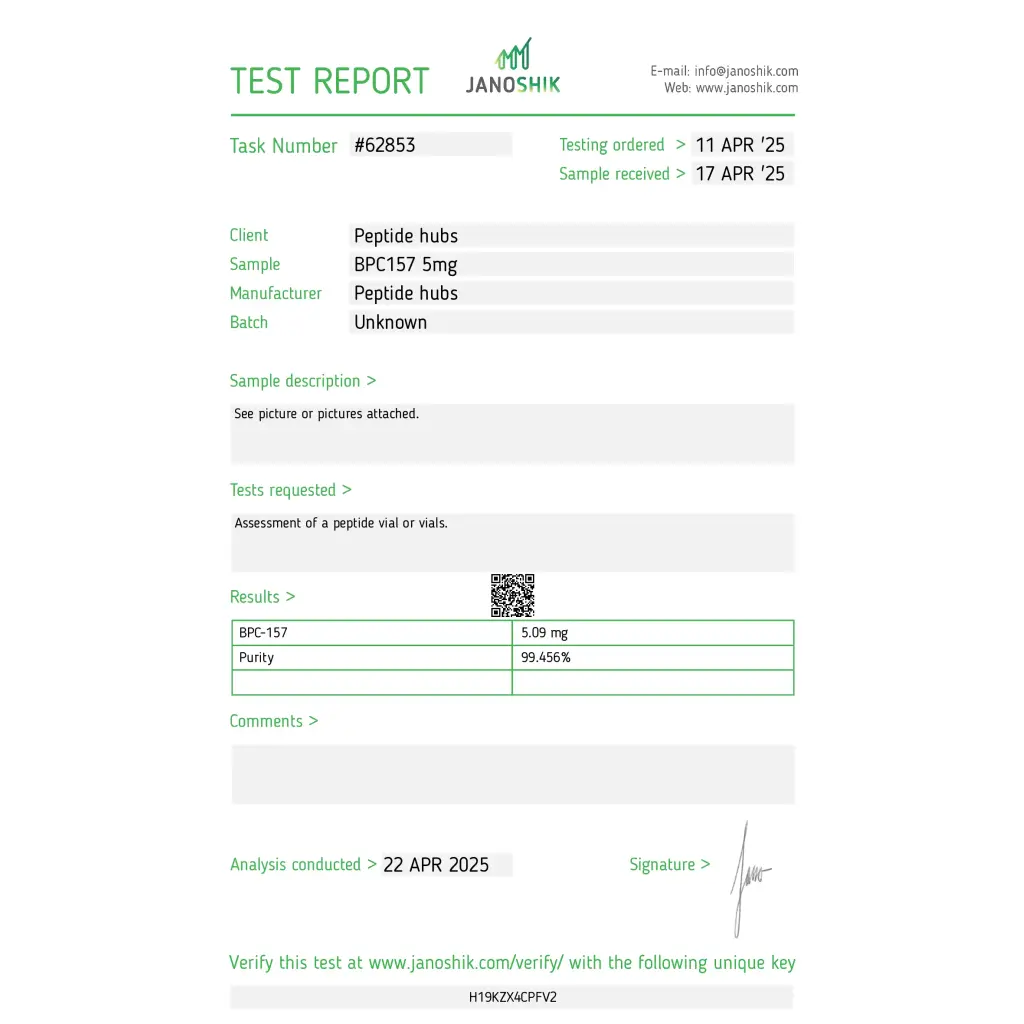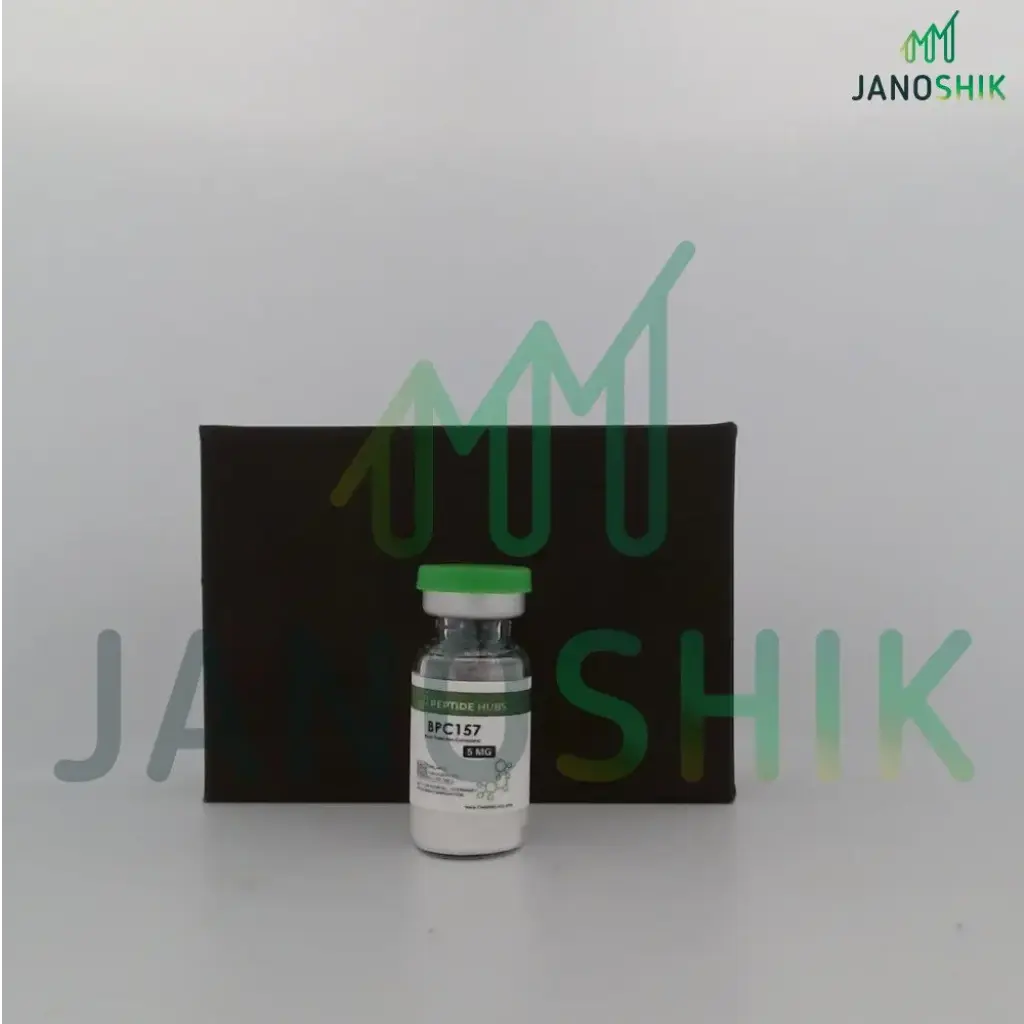





Manufacturer: Peptide Hubs
Contains: Body Protective Compound 157
Dosage: 5mg
Package: vial
Min. Order: 1
BPC 157 (Body Protection Compound-157) is a synthetic peptide derived from a protective protein naturally found in human gastric juice. This 15-amino-acid sequence has gained significant attention for its remarkable regenerative properties observed in scientific studies. Unlike many experimental compounds, BPC-157 occurs naturally in the body, specifically in the stomach lining, where it contributes to mucosal protection and healing. Peptide Hubs offers this innovative compound in pharmaceutical-grade purity for research purposes, providing a reliable source for those seeking to explore its potential benefits.
The peptide's unique structure contributes to its exceptional stability and bioavailability. Unlike many peptides that break down rapidly in the digestive system, BPC-157 maintains its structural integrity when administered orally or via injection. This stability allows it to exert systemic effects throughout the body, making it a versatile compound worthy of research attention.
BPC 157 functions through multiple biological pathways to promote healing and tissue protection. Research indicates it enhances angiogenesis (new blood vessel formation), which improves blood flow to injured areas and accelerates the healing process. This increased circulation delivers essential nutrients and oxygen while removing waste products, creating an optimal environment for tissue regeneration.
The peptide also demonstrates significant anti-inflammatory effects by modulating immune responses. It regulates inflammatory cytokines and promotes the production of anti-inflammatory mediators. Additionally, BPC 157 stimulates collagen production and promotes the formation of granulation tissue, crucial for wound healing. Studies show it upregulates growth hormone receptors in tendon fibroblasts, potentially amplifying the healing effects of naturally occurring growth hormone.
Scientific research and anecdotal reports suggest several potential benefits associated with BPC 157 supplementation. While individual results vary, the following effects have been documented in preliminary studies:
These BPC-157 peptide benefits make it a compelling compound for research purposes, particularly for those interested in tissue repair mechanisms and recovery optimization. Multiple BPC-157 reviews from researchers note its potential in supporting the healing process across various tissue types.
Proper dosing is essential when researching BPC 157. Based on available scientific literature and conversion from animal studies, we recommend the following research protocols:
| Body Weight | Minimum Daily Dose | Optimal Daily Dose | Maximum Daily Dose |
|---|---|---|---|
| 150 lbs (68 kg) | 110 μg | 220 μg | 330 μg |
| 200 lbs (91 kg) | 145 μg | 290 μg | 435 μg |
| 250 lbs (113 kg) | 180 μg | 360 μg | 540 μg |
Dosing frequency typically involves splitting the total daily amount into two administrations (morning and evening). Research subjects typically observe potential benefits within 2-4 weeks of consistent use. Oral capsules should be taken with meals to enhance absorption, while injectable forms require proper sterile technique. Always consult with a research supervisor before beginning any new peptide protocol.
BPC 157 is generally well-tolerated in research settings, with few reported adverse effects. Some studies note temporary, mild reactions including:
Important precautions include avoiding BPC 157 during pregnancy or breastfeeding due to insufficient safety data. Competitive athletes should note that BPC 157 is prohibited by the World Anti-Doping Agency (WADA). The compound is not approved by the FDA for medical treatment and is available for research purposes only. Long-term safety data in humans is limited, so responsible research practices are essential.
BPC 157 may interest several research focus areas:
Researchers exploring tendon, ligament, and muscle repair mechanisms may find BPC 157 particularly relevant. Its potential to accelerate connective tissue healing makes it valuable for studying sports injury recovery protocols and rehabilitation approaches.
Given its origin in gastric juice, BPC 157 offers compelling possibilities for studying gut barrier function, ulcer healing, and inflammatory bowel conditions. Its cytoprotective properties warrant investigation for various digestive disorders.
Studies on recovery enhancement may benefit from exploring BPC 157's potential to reduce downtime between training sessions. While not approved for athletic use, its mechanisms in tissue regeneration present interesting research avenues.
Peptide Hubs sets the industry standard for research-grade peptides with our uncompromising commitment to quality:
Our dedicated research support team provides comprehensive documentation including storage recommendations, handling protocols, and detailed product information. When you choose Peptide Hubs BPC 157, you're selecting a trusted partner committed to advancing scientific understanding of this remarkable peptide compound.
**Disclaimer**: This product is intended for laboratory research purposes only. It is not intended for human consumption, medical treatment, or diagnostic use. All information presented here is for educational purposes regarding ongoing scientific research. Researchers must follow all applicable regulations governing peptide research in their jurisdiction.
You need to be logged in to leave a review
July 15, 2025
This bpc did wonders for me. I had a wrist injury after a workout which reduced the mobility quite badly for a few weeks. Started using this peptide and it fully recovered in about a month and a half. Had a similar injury sometime ago and I'm sure it would have take a couple of months longer to heal without bpc. The peptide hubs work very well for me.